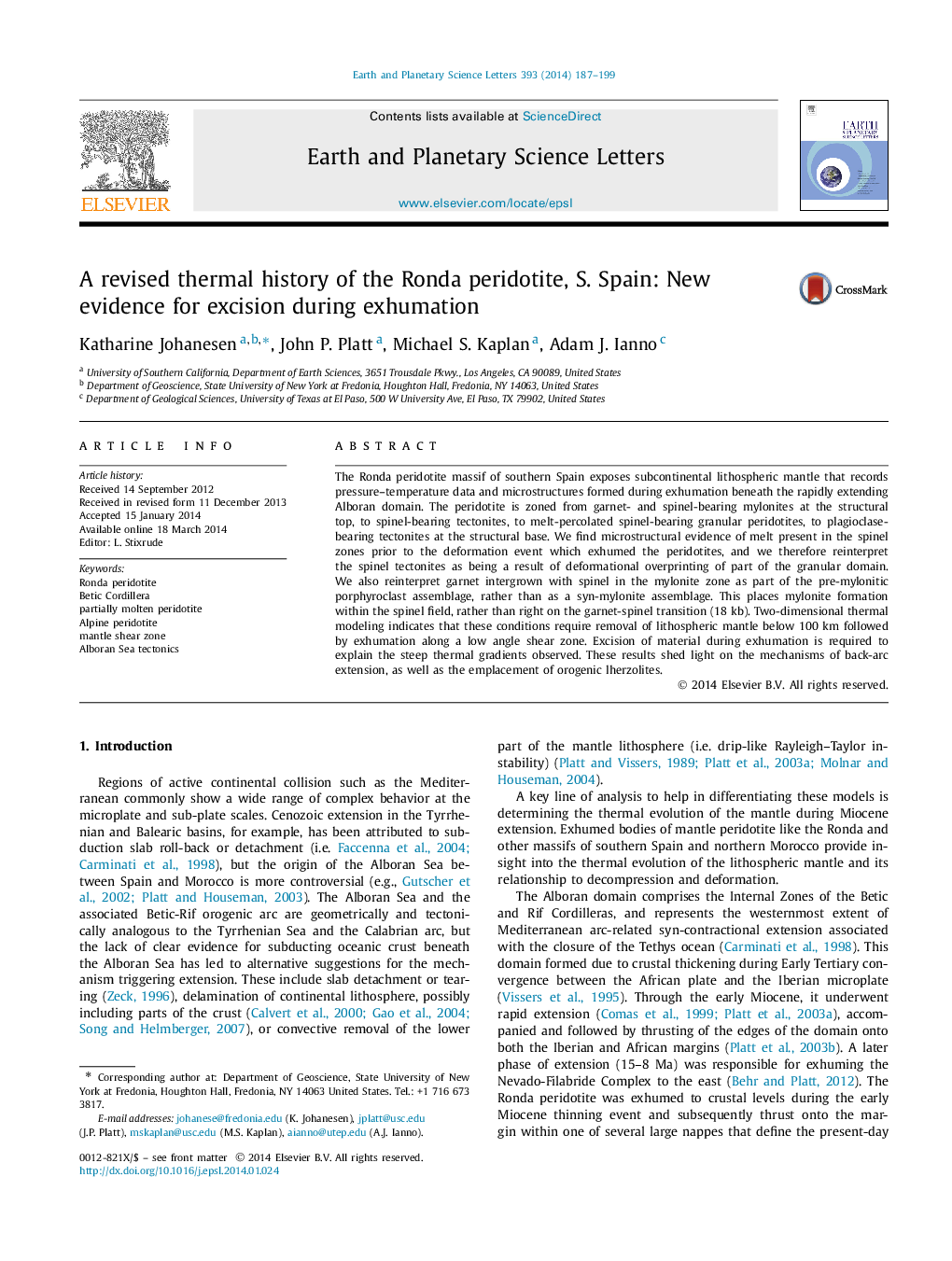| کد مقاله | کد نشریه | سال انتشار | مقاله انگلیسی | نسخه تمام متن |
|---|---|---|---|---|
| 6429340 | 1634763 | 2014 | 13 صفحه PDF | دانلود رایگان |

- We show new microstructural evidence and thermobarometry for the Ronda peridotite.
- Dynamic crystallization during exhumation overprinted melt migration.
- The interior of the massif cooled rapidly while deforming within the spinel field.
- Thermal models of the data indicate the peridotite experienced tectonic excision.
- Asthenosphere at â¼100 km caused heating and extension in the western Mediterranean.
The Ronda peridotite massif of southern Spain exposes subcontinental lithospheric mantle that records pressure-temperature data and microstructures formed during exhumation beneath the rapidly extending Alboran domain. The peridotite is zoned from garnet- and spinel-bearing mylonites at the structural top, to spinel-bearing tectonites, to melt-percolated spinel-bearing granular peridotites, to plagioclase-bearing tectonites at the structural base. We find microstructural evidence of melt present in the spinel zones prior to the deformation event which exhumed the peridotites, and we therefore reinterpret the spinel tectonites as being a result of deformational overprinting of part of the granular domain. We also reinterpret garnet intergrown with spinel in the mylonite zone as part of the pre-mylonitic porphyroclast assemblage, rather than as a syn-mylonite assemblage. This places mylonite formation within the spinel field, rather than right on the garnet-spinel transition (18 kb). Two-dimensional thermal modeling indicates that these conditions require removal of lithospheric mantle below 100 km followed by exhumation along a low angle shear zone. Excision of material during exhumation is required to explain the steep thermal gradients observed. These results shed light on the mechanisms of back-arc extension, as well as the emplacement of orogenic lherzolites.
Journal: Earth and Planetary Science Letters - Volume 393, 1 May 2014, Pages 187-199